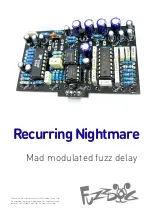
User manual
Version: v4.5.2
9
[fiducial1]
10
x=-11.811
11
y=500.934
12
z=0.048
13
[fiducial2]
14
x=-11.77
15
y=970.879
16
z=0.266
17
[fiducial3]
18
x=-11.759
19
y=1165.952
20
z=-0.131
Listing 7.2: Example of geometry file
7.8 Marker tracking parameters
The tracking of
markers
(and
fiducials
) is tuned by a small set of parameters:
- epipolar max distance;
- matching tolerance;
- registration mean error;
- matching maximum missing points;
- tracking range;
- tracking time span.
Additional parameters affect the detection of the
raw data
, therefore also impacting the tracking; those are:
- edge blob detection;
- pixel weight for centroids;
- advanced centroid detection.
In this section those parameters are explained.
Epipolar max distance
The epipolar max distance affects the
raw data
pairing. The epipolar error
tolerance expresses the distance (in pixels) between the centroid of the
raw data
from the right camera and
its expected position deduced from the centroid position on the left camera. The bigger the tolerance, the
higher the probability of finding a matching pair, however the probability of creating a ‘phantom fiducial’ (see
Section 7.9) is also increased. Finally, the number of performed operations increases with the epipolar error
tolerance, as more possible combinations have to be tested.
Matching tolerance
The matching tolerance affects how
fiducials
are matched to a known geome-
try. The matching tolerance is the maximal difference between the length between two
fiducials
and the
reference length, as deduced from the geometry file. The bigger the tolerance, the looser the matching
criteria.
Atracsys / 2020-06-17 / 16:48:00
42 / 113
















































